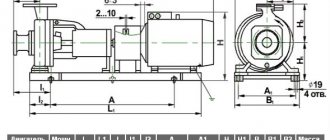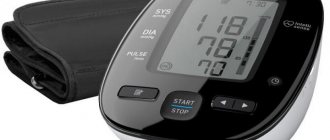Droppers for high blood pressure are given to relieve a hypertensive crisis . In this case, minutes can count, so conventional medications in the form of tablets do not cope due to the long wait for their action. Direct intravenous administration of drugs through a dropper at elevated pressure provides the fastest possible effect. Often medications are not used independently, but are mixed with each other. Combinations of drugs are popular. We will tell you which IVs are used for high blood pressure, in what cases, what effect they have on the body and possible side effects.
Pros and cons of injections
To stop a crisis and reduce blood pressure, you can use different means, but all medications have their own advantages and disadvantages. For treatment in hospitals and at home, the following injection solutions are often used:
Furosemide, part of the group of diuretics. To relieve a sharp rise in pressure, use 1-3 ampoules of 2 ml, injected slowly into a vein or muscle. It is forbidden to use a diuretic during pregnancy, people with kidney disease and pathologies of the genitourinary system, as well as in case of individual intolerance to the drug. Side effects include nausea and vomiting, diarrhea, and itching.- Enap, part of the ACE inhibitors. You can reduce blood pressure by slowly injecting 1 ml of the drug into a vein. Prohibited in case of edema or allergies. After the injection, there may be a dry cough, inflammation of the respiratory system, sleep disturbances and headaches, and some develop vomiting.
- Magnesium sulfate. You can normalize blood pressure with 1-2 ampoules of 10 ml, gradually injecting it into a vein. The medicine is contraindicated in case of calcium deficiency, as well as problems with the respiratory system.
Among the main advantages of injection medications are:
- Quick action, since the pressure returns to normal within half an hour.
- Efficiency, because after the injections the result will be 100%.
Among the disadvantages are:
- A large number of side effects.
- Long-term therapy disrupts the functioning of the liver and kidneys.
- A sharp decrease in pressure is possible, which leads to shock and collapse.
Since injections can be dangerous to humans, it is important to correctly evaluate the results of such treatment.
Intracranial hypertension
When intracranial pressure increases, Mexidol is used. Most often the condition is diagnosed in women.
Mexidol injections are indicated for intracranial hypertension
Indications for use (in addition to reducing ICP):
Diuretics for hypertension
- cerebral circulatory disorders;
- TBI (traumatic brain injury) and its consequences;
- encephalopathy;
- VSD (vegetative-vascular dystonia);
- minor cognitive impairment;
- anxiety against the background of neurotic and neurosis-like conditions;
- acute period of myocardial infarction;
- primary open-angle glaucoma;
- elimination of withdrawal symptoms;
- acute poisoning with antipsychosomatic drugs.
Contraindications are:
- serious disturbances in the functioning of the kidneys and liver;
- hypersensitivity to the components of the product;
- childhood;
- period of bearing a child.
Important! Mexidol is administered intramuscularly or intravenously (stream or drip).
Side effects:
- attacks of nausea;
- dry mouth;
- increased drowsiness;
- allergic symptoms.
Prevention of blood pressure disorders
Most of the older population suffers from hypertension. To exclude the development of this disease, not only treatment, but also preventive measures are carried out.
To avoid having to use injections or take pills, you need to:
- Quit smoking, drinking alcohol and using drugs.
- Eat right, eliminate or reduce salt intake, reduce the amount of fats and carbohydrates in your diet.
- Play sports, pay attention to walking in the fresh air, swimming, running.
- Normalize your work and rest schedule.
- Reduce the number of stressful situations.
Preventive measures include timely treatment of diseases that provoke high blood pressure.
You should not engage in self-therapy; It must be remembered that the administration of hot injections and other injections requires a doctor’s permission.
In order not to miss the development of hypertension, constant monitoring of pressure is necessary. Blood pressure measurements should not be taken immediately after eating, waking up or physical activity.
It is best to do this after 10-20 minutes. To obtain reliable information, you must adhere to the rules. If systematic deviations in the readings are detected, additional consultation with a cardiologist will be required.
- How to lower intracranial pressure at home
Inpatient therapy
During a complicated crisis, blood flow to the brain is disrupted, which negatively affects cardiac activity. In the chronic course of such diseases, the patient may experience a stroke or heart attack. This increases the likelihood of death.
If the value approaches 220/120 mmHg, then internal organs may be damaged. After emergency care is provided to the patient, he is sent to the hospital. In its conditions, doctors normalize the indicators using the following injections:
- Clonidine - helps reduce blood pressure by 20% in 2 hours. Over the next 6 hours, the pressure normalizes to the operating limit. The patient feels well.
- Eufilin - restores normal breathing.
- Lasix + Captopril - a complex one-time injection or separate use of these injections every 30 minutes. The dosage is determined based on the patient’s reaction, since the medication can cause nausea and vomiting.
- Relanium - helps relieve muscle spasms. If the patient has been administered triplet, then the dosage of Relanium is reduced.
- Sodium Nitroprusside is administered by drip if high blood pressure is accompanied by clinical signs of heart failure.
A hypertensive crisis can lead to swelling of the brain and lungs. Therefore, the patient is discharged after stable treatment results. According to statistics, 40% of patients are readmitted to the hospital within the first 3 months after hospital treatment.
Pros and cons of injection therapy
The following features characterize the main injections for high blood pressure:
- Furosemide is administered slowly but can cause serious side effects including nephritis.
- Enap - injected slowly. Sometimes it provokes migraines, dry coughs, and allergies.
- Magnesium sulfate - promotes thickening of the airways, can cause apnea.
- Dibazol - used over a long course.
The advantages of the drugs include a drop in pressure within 30 minutes after the injection. All of the above products are characterized by high efficiency. The disadvantages of the injections under consideration include:
- high percentage of adverse reactions;
- against the background of long-term therapy, problems with the liver and kidneys appear;
- The method of administration is considered traumatic, and infection may occur.
Low blood pressure injections
Too low a blood pressure level, as well as too high, is accompanied by the development of unpleasant conditions. What injections are given to increase blood pressure? Most often used:
- Mezaton. The drug has a direct effect on peripheral vessels, causing them to narrow. In this case, the effect on the myocardium is minimal.
- Angiotensinamide. The active ingredient is angiotensinamide. While taking the medication, hormones that act on adrenergic blockers are released into the blood. As a result, narrowing of the lumens of small blood vessels occurs and more active penetration of calcium into the cells.
- Heptamil. The active ingredient is heptaminol hydrochloride. It has a tonic effect on the heart and blood vessels, helps return blood from the depot to the channel, but does not cause too much constriction of blood vessels. Heptamil has proven itself well in the development of shock conditions, as well as in neuroleptic syndrome (low blood pressure in this case is due to uncontrolled use of neuropleptics).
- Cordiamin. The active ingredient is niketamide. It has a direct effect on the vasomotor region of the brain. Under the influence of the drug, the brain transmits a signal about vasoconstriction, which provokes the desired effect - an increase in blood pressure. Cordiamine injection at low pressure can be given subcutaneously, intramuscularly, or intravenously. When using these injections with low blood pressure, twitching of the facial muscles and unreasonable anxiety may occur.
- Ephedrine. Most often, the solution is used for chronic hypotension. Although it can be used to urgently increase blood pressure.
Injections for high and low blood pressure should be selected by a specialist. Self-administration of the drug may cause a deterioration in overall health.
Emergency injections
Consequences and irreversible changes in the body during crises can be eliminated by calling an ambulance in a timely manner. Doctors can give the right injection, reducing risks. Based on the condition, the doctor determines whether to use injections or tablets. As a rule, to quickly provide an effect, specialists use:
The combined mixture is called Troychatka. You need to draw several solutions into the syringe at once. Papaverine 2 ml (2%) helps normalize blood flow and pressure. Diphenhydramine 1 ml (1%) calms the nervous system. Analgin 2 ml (50%) anesthetizes and relieves inflammation. The injection is given intramuscularly and is used only for critical situations. This injection is contraindicated for long-term therapy.- Dibazol and Papaverine. The combination helps reduce high rates caused by spasms. For an injection, 4 and 2 ml are used, respectively. The injection must be done slowly, and the combination itself is not suitable for older people. The drugs are administered intramuscularly; they are not suitable for people with upper blood pressure below 90 units or for diabetics. If severe temporal pain occurs, you can add Analgin to the syringe.
- Hot prick. This remedy is used to relieve crises, injections can be with different components, the injection is painful, and is administered slowly. Before administration, the drug is warmed up in the hands.
If an ambulance is called, doctors relieve the crisis and reduce the patient’s blood pressure on the spot. In some cases, hypertensive patients will have to be hospitalized.
Other drugs to lower blood pressure administered by drip
Other drugs used in droppers to normalize blood pressure in hypertensive patients:
- Verapamil (prohibited for heart failure, acts within 1 minute);
- Nicardipine (prohibited for heart failure);
- Hydralysine (action after 10 minutes, repeated dropper after 3-5 hours).
Our medical professionals have extensive experience installing IVs at home for a variety of cases, including hypertension and high blood pressure.
What injections are given during inpatient treatment?
Blood pressure parameters 220/120 mm Hg. Art. very dangerous for humans. In this condition, it is important to call a doctor as soon as possible. After a temporary reduction in blood pressure by injection, treatment will continue in a hospital setting.
Drugs used in the hospital:
- Clonidine reduces the readings by 20% in a couple of hours (then blood pressure stabilizes within 6 hours, the patient’s condition improves);
- Eufillin restores the respiratory system;
- Captopril + Lasix are administered in one syringe or separately with a difference of 30 minutes;
- Relanium relieves increased muscle tone;
- Sodium nitroprusside is administered via IV in case of heart failure.
- How to lower low blood pressure at home: folk remedies and medications
A sharp increase in blood pressure in some cases leads to edema of the lungs and brain. When the condition stabilizes after treatment, the patient is discharged. Statistics show that in 40% of cases a person ends up in the hospital again after 3 months.
We recommend reading: Complications of hypertension - what are they?
Injectable drugs to lower blood pressure
Injectable blood pressure medications are divided into diuretics, ACE inhibitors, and peripheral vasodilators. Now more details about each:
- Diuretics help remove excess fluid from the body, lowering blood pressure.
- ACE inhibitors stop the causes of pressure build-up. After administration of the drug, blood pressure decreases slowly. This treatment method is ideal for older people.
- Peripheral vasodilators relieve vasospasm. Used during pregnancy.
After an attack of hypertension, the cardiologist should prescribe the patient further therapy at home.
Papaverine + dibazole
When the tonometer readings become above 180/90 mmHg. Art., the emergency doctor reduces the pressure with a mixture of 2 ml of Papaverine 2% and 3 ml of Dibazol 1%. The medicine is administered intramuscularly, very slowly. The pressure stabilizes after half an hour.
Dibazol has a vasodilating effect. The active ingredient of the drug, bendazole, has the following functions:
- reduces the tone of smooth muscles that form part of the walls of blood vessels;
- normalizes blood circulation.
The drug acts for a short time, there are no side effects.
Papaverine is a vasodilator that reduces muscle tone. The drug is injected into the gluteal muscle. If it is administered intravenously, it can cause a sharp decrease in blood pressure, which the stent causes hypotensive collapse.
- How to properly lower intracranial pressure: drug, surgical and alternative treatment
Magnesium sulfate
Magnesium sulfate is a very painful injection, so it is combined with Novocaine or No-shpa (Drotaverine). It is considered a hot injection for pressure. For administration, a 25% solution is used. Positive effects include removing excess fluid from the body, relieving swelling, improving blood circulation, and dilating blood vessels. An overdose of the drug disrupts the heart rhythm. Rules for therapy:
- the injection is performed using a very thin and long needle;
- you need to warm the ampoule in your palms before use;
- The medicine should be injected very slowly into the gluteal muscle.
Magnesia is one of the popular drugs for lowering blood pressure, as it very quickly returns blood pressure to normal.
Potent drugs
Treatment of hypertension with strong injections is possible only in a hospital setting. Such means include:
- Nitroglycerine. Relieves spasms of smooth muscles, administered through an IV.
- Nicardipine. It has a pronounced hypotensive effect and is administered intravenously by drip. The therapeutic effect is detected after 7 minutes and lasts 20 minutes. Use with caution in case of cardiac ischemia.
- Verapamil. It is administered intravenously and begins to act immediately. It has many contraindications: cardiac pathology, tachycardia, use of β-blockers, lactation period.
- Hydralazine. Administered intravenously, it is effective in hypertensive crisis, a severe stage of hypertension. The positive effect appears after 10 minutes and lasts 10 hours.
- Nifedipine. A vasodilator drug from the group of calcium antagonists, lowers blood pressure. Give no more than 30 mg per day for 3 days. The complex uses diuretics Furosemide, Lasix, Mannitol by drip.
When the drugs are administered, a positive effect is considered to be a decrease in blood pressure by a third of the original figures. In case of an overdose of drugs, severe hypotension may occur.
It is important to remember that injectable medications cannot be used for treatment on their own.
Classification of medications
Injections for high blood pressure that can be used are divided into three groups (depending on the effect):
- Diuretics. Helps remove excess fluid from the body. A decrease in the volume of blood circulating through the vessels helps to lower blood pressure. The use of diuretics has a prolonged effect.
- ACE inhibitors. These blood pressure medications block the action of angiotensin-converting enzyme, which causes blood pressure to rise. His indicators drop slowly, which does not cause a deterioration in the patient’s condition. For this reason, injections of this type are often prescribed to elderly patients.
- Peripheral vasodilators. Helps reduce muscle tone in the walls of blood vessels, which has a hypotensive effect. Injections can be used during pregnancy.










